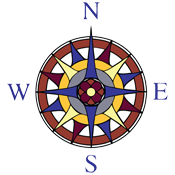Media Literacy in the Age of Misinformation *ONLINE/TRANSITION*
Description:
Media Literacy in the Age of Misinformation is a two-semester high school course that looks at media literacy from both social science and journalism perspectives. Students will develop analytical skills, awareness of national and global current events, and an understanding of how news information is acquired and packaged for our consumption. You will read news each week and discuss current stories in our live meetings. We will examine arguments and evidence, considering reliability, verification, ethical standards, balance and bias, context, and more. We will study some logical fallacies, such as the Slippery Slope and Straw Man. By the end of this course, you will be a better-informed, smarter consumer of news -– and hopefully a more involved citizen, better able to take action on issues you care about.
Note:All class meetings will be in a virtual classroom, providing synchronous online instruction via videoconferencing for fall semester. At the instructors' option, the class may transition to in-person instruction for second semester as COVID-19 scenarios improve.
Topics in this Series: Media Literacy in the Age of Misinformation (Semester 1 and Semester 2). Although both semesters have the same title, content will naturally be different because of changing events and circumstances in national and world news. Students may register for either or both semesters independently. Continuing students from first semester receive priority pre-registration for second semester.
Prerequisites: No prerequisites. Strong independent reading skills (or robust home support) are necessary, as much news material aims for a reading level pegged at approximately tenth grade. Students must also be able to discuss sometimes difficult and mature themes
Schedule:The Friday class meetings will begin in a virtual classroom, providing synchronous online instruction via videoconferencing— with the teacher's option to move to in-person instruction as COVID-19 scenarios improve. When that takes place, the full class will transition to an in-person meeting.
Workload: Students should plan for 2-3 hours per week outside class meetings for reading and homework, a range which may vary based on reading speed. Additional time may be needed to pursue individual news interests, as the student wishes.
Assignments: The Canvas online class management system will be used to post weekly assignments, such as readings, videos, podcasts, written work, and news quizzes, and scores. These are due by 10:00 AM each Thursday (the day before Friday in-person meetings) to promote active, knowledgeable discussion. Students should have their own e-mail address in order to be set up as users of the Canvas system. Parents can also be set up as Canvas guests/observers for purposes of tracking the student's progress and workload.
Assessments: In this class, the instructor will assess a student's progress by checking that weekly homework sets are complete and giving periodic take-home tests; class participation is also strongly encouraged. Parents will be able to view accumulated points awarded in the class for the purpose of determining a parent-awarded course grade.
Textbook/Materials: The cost of an individual subscription to New York Times Upfront, a high school current events magazine is included in the course fee. Families should budget approximately $30.00 for one additional paid news subscription (details to be provided in class). Other readings and materials will be provided by the instructor.
Credit: Homeschool families may wish to count this course as a component (partial) credit in Social Science or Journalism for purposes of a high school transcript.
We are sorry but registration for this event is now closed.
Please contact us if you would like to know if spaces are still available.

